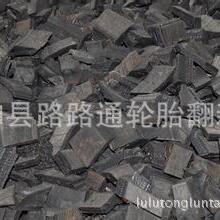Organic solar cell is made for use with indoor light
As compared to their more commonly-seen counterparts that utilize crystalline silicon semiconductors, organic solar cells are thin, flexible, lightweight and cheap, allowing for their application in a wide variety of items. Now, researchers have developed one that's optimized for use with indoor light.
The new organic solar cell is being developed by scientists at Sweden's Linköping University, the Chinese Academy of Sciences, and the University of Science and Technology Beijing.
Its active layer is made up of a unique combination of donor and acceptor materials, allowing it to absorb the exact wavelengths of light that are typically found in most indoor environments. In a nutshell, donor materials absorb photons, while acceptors acquire electrons.
Two prototypes have been created so far, one measuring 1 square centimeter (0.2 sq in) and the other measuring 4 sq cm (0.6 sq in).
When exposed to artificial light at an intensity of 1,000 lux, the smaller one was reportedly found to convert light energy to electricity with an efficiency of up to 26.1 percent. Over a period of more than 1,000 hours, it delivered over 1 volt utilizing ambient light that varied between 200 and 1,000 lux (the typical range of room lighting). The larger cell, meanwhile, maintained an efficiency of 23 percent.
Such rates are noteworthy, as organic solar cells are generally known for notbeing particularly efficient. In fact, the scientists are confident that once developed further, the efficiency of the indoor organic solar cells should be boosted even higher. They may then find use in a variety of applications, such as powering simple devices that are part of the Internet-of-Things.
The technology is now being commercialized by a Linköping spin-off company. A paper on the research, which was led by the university's Assoc. Prof. Feng Gao, was recently published in the journal Nature Energy.
Source: Linköping University










